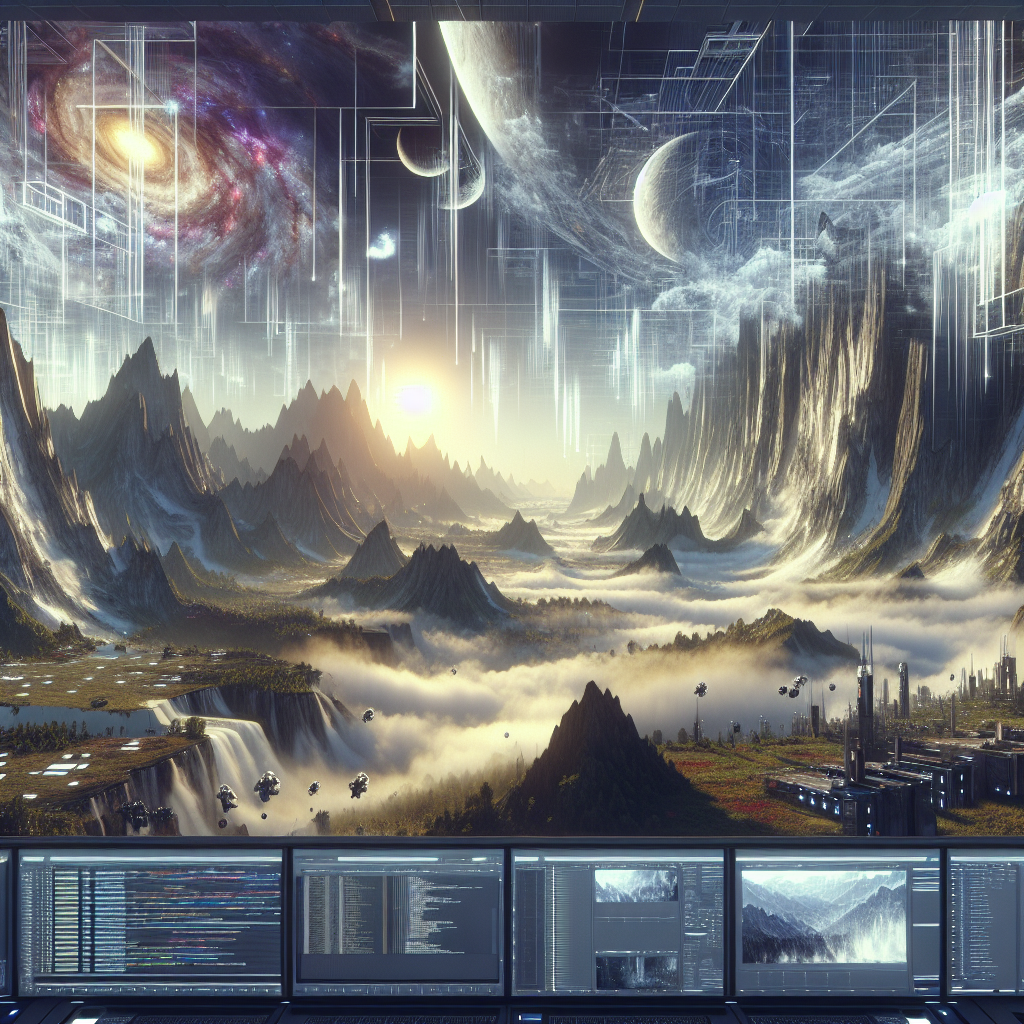Revolutionizing Trailer Production with AI: A Deep Dive into the Future of Filmmaking
In an era where the impossible becomes possible on a daily basis thanks to the advancements in technology, the filmmaking industry stands on the brink of a monumental shift. The age-old craft of trailer and film production, once shackled by the heavy chains of budget constraints, logistical nightmares, and the sheer manpower required, is being redefined. At the forefront of this revolution is the integration of artificial intelligence (AI) in creating movie trailers and short films that are not only cost-effective but meticulously crafted to captivate and enchant. Let’s embark on a thrilling journey through the innovative process of crafting movie trailers with AI, as pioneered by a visionary team led by a filmmaker with over 15 years of experience in the industry.
The Genesis of AI-Generated Trailers
Envision a world where the creation of movie trailers and short films is democratized, where the financial barriers to showcasing creativity are dismantled. This is no longer a realm of fantasy, thanks to the advent of AI in video production. The initiative to create an entire movie trailer using AI marks a groundbreaking moment in the film industry. This transformative approach opens up a plethora of opportunities for filmmakers, enabling them to experiment and express their narratives without the constraints of traditional filmmaking.
The process begins with a simple yet crucial step: ideation. Crafting the narrative backbone of the trailer is paramount, and this is where AI steps in to assist. By utilizing tools like ChatGPT, creators can effortlessly generate a storyline and a corresponding shot list, laying the foundation for their trailer.
The Five-Step Odyssey to Trailer Creation
The journey of bringing a trailer to life with AI is segmented into five distinct phases, each pivotal in its own right.
1. Conceiving the Vision
The first leg of this voyage involves harnessing the power of AI to conceptualize the story and create a comprehensive shot list. This is where the magic begins, as AI algorithms generate innovative shot ideas based on the filmmaker’s initial prompt. It's akin to planting a seed that will grow into a mesmerizing visual narrative.
2. Bringing Images to Life
The second phase transitions from the abstract to the tangible, as these shot ideas are visually manifested through another AI tool, MidJourney. This tool specializes in generating realistic, cinematic images that serve as the raw material for the trailer. This phase is where the envisioned shots take on a visual form, ready to be woven into the fabric of the trailer.
For further reading on MidJourney and its capabilities, visit MidJourney's website.
3. Animating the Vision
With a collection of images at hand, the next step is to animate these static visuals, infusing them with life to narrate the story. Tools like Runway play a crucial role here, offering functionalities that morph images into moving visuals, complete with subtle cinematic movements that enhance the storytelling.
4. Crafting the Narrative
The penultimate phase involves the meticulous art of editing. This is where the sequence of the trailer is fine-tuned, ensuring that each shot succinctly contributes to the overarching narrative. Editing platforms like DaVinci Resolve and CAPCUT come into play, offering a sandbox for creativity, where the raw materials are sculpted into a cohesive and captivating trailer.
For an in-depth guide on using DaVinci Resolve, consider exploring Blackmagic Design's official website.
5. The Finishing Touches: Music and Sound Effects
No trailer is complete without the auditory experience — music and sound effects that elevate the visual storytelling. This phase explores the use of AI in generating mood-congruent music and sourcing sound effects, weaving an auditory tapestry that complements the visual narrative. However, it also acknowledges the limitations of AI in this domain, with the creators often turning to royalty-free libraries to find the perfect soundscapes.
This innovative approach to trailer production not only showcases the potential of AI in creative industries but also highlights the evolving landscape of filmmaking. It represents a fusion of technology and artistry, where boundaries are blurred, and the possibilities are endless.
The Future Beckons
The paradigm shift towards AI-generated trailers and films is not merely a testament to technological advancement but a beacon of hope for creatives worldwide. It democratizes the art of filmmaking, providing an accessible platform for storytellers to share their visions without the daunting financial and logistical challenges of traditional film production.
This revolution in trailer production is just the beginning. As AI technology continues to evolve and mature, we can anticipate a future where the creation of full-length films by AI becomes a reality, reshaping the entertainment industry in ways we can only begin to imagine.
While some may view the rise of AI in creative domains with skepticism, fearing the erosion of human artistry, this initiative stands as a compelling counterargument. It exemplifies how AI can serve as a tool that amplifies human creativity, allowing filmmakers to transcend the limitations of the physical world and explore the boundless realms of their imagination.
In the end, the journey of creating movie trailers with AI is a testament to human ingenuity and the transformative power of technology. It invites us to envision a future where stories are told without barriers, where creativity knows no bounds, and where the film industry continually evolves to tell the tales of tomorrow.
As we stand on the precipice of this new era, one thing is clear: the revolution in filmmaking has just begun, and its future is as bright and boundless as the stories it will tell.
Related News
- Unveiling the Cinematic Potential of AI: Crafting Movie Trailers in the Digital Age
- The Dawn of AI-Generated Cinema: A Journey into the Future of Filmmaking
- Unleashing Creativity with InVideo AI: A Deep Dive into Next-Level Video Production
- The Dawn of a New Era in AI Video Generation
- Unleashing Creative Potential: How AI Transforms Content Creation
